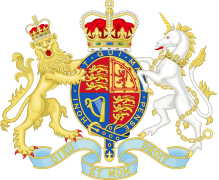United Kingdom: Government
Key Figures
- Chief of State:
- King Charles III
- Head of Government:
- Prime Minister Keir Starmer
Overview
- Government Name:
- United Kingdom of Great Britain and Northern Ireland
- Constitution:
- No written consitution, parliament legally has sovereignty . Un-written consitution focuses on statutes, common law and traditional rights.
- Government Type:
- Constitutional Monarchy and a Commonwealth Realm

Index of Economic Freedom
Country Risk Rating
Government Branches
| Main Powers | Election Process | Election Cycle 1 | |
|---|---|---|---|
| Executive | Power to dismiss and appoint a prime minister, grant Royal Assent to bills, commission officers in the Armed Forces, ratify and make treaties, recognize sttes, and deploy Armed Forces over seas. |
Prime minister is elected by parliament. |
5 years |
| Judicial | Has jurisdiction to resolve disputes relating to devolution in the United Kingdom and concerning the legal powers of the three devolved governments (in Scotland, Wales and Northern Ireland) or laws made by the devolved legislatures. |
Appointed by the monarch. |
Mandatory retirement age of 80 |
| Legislative | Ministers are a part of the Parliament which is in charge of the primary acts of legislation. |
House of Lords are appointed by the monarch and 92 members are hereditary, and the House of Commons are elected by simple majority vote in single-member constituencies. |
5 years |
Regional Trade Blocs
International Organization Participation [2]
Environmental Agreements [3]
Tax Information [2]
- Tax Authority:
- HM Revenue and Customs
- Tax Name:
- VAT
Sources:
- ElectionGuide http://www.electionguide.org/
- EY, http://www.ey.com
- CIA World Factbook, https://www.cia.gov/the-world-factbook/
- U.S. Bilateral Relations Fact Sheets http://www.state.gov/r/pa/ei/bgn/


